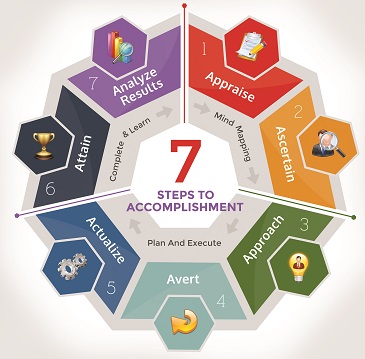In January we published our annual article about the seven trends in business analysis and project management. If we examine these trends, we see that they have one theme—they are all about value. We see and hear the word “value” in articles, blogs, on videos, and even in the definition of business analysis: “…analyzing business needs and recommending solutions that deliver value…” (BABOK® Guide 3.0).
ith so much emphasis on value, we wonder whether the term “value” is just the latest buzzword, or if there is enduring significance to the word. This article will examine each of the seven trends, discuss its relationship to value, and explore whether the concept of value is simply a trend or here to stay.
But what is “value?” It means so many different things to different people. Does it have to be quantified or can it be subjective? One of the authors (Elizabeth) has worked with an equal number of sponsors who required value to be measured and those who inherently understood the value of strategic projects. The latter group didn’t want to waste time quantifying something like “competitive advantage” or how much it would cost to upgrade technology, or although it could be done, measure the cost of risk avoidance.
So first, let’s attempt to define that very ambiguous word. As we said, it means different things depending on the application of the term to the business at hand. For example, in Marketing, the focus is on the customer perception of the goods and services and their willingness to pay for them. In economics, there are two components—utility and power. In Accounting, it has to do with monetary worth. We suggest that project managers and business analysts consider all these different aspects.
In 2015, the central theme of our Trends article was Innovation, without addressing whether innovation delivered value. It seemed that every organization wanted to be innovative, and every person wanted to be an entrepreneur. However, we have seen that innovation, disruption, and entrepreneurship for their own sake is not productive. Organizations now realize that a focus on “disruptive” innovation can indeed be, well, very disruptive. More and more of them are finding that disruption is expensive and that entrepreneurship might better be handled by internal people (intrapreneurs) who have organizational history and knowledge. Said another way, there has to be a business case for innovation, and it must provide enough value to outweigh the costs and risks of disruption.
{module ad 300×100 Large mobile}
With this in mind, let’s look at first two 2016 trends and the ways in which they bring value to organizations.
Trend #1 Proving our value through Business Relationship Management
As we said in the January article, executives have long been interested in getting the greatest value from initiatives. However, they have struggled with how to determine and measure it, as well as what the term actually means. We suggested that the role of the business relationship manager could work with executives and business managers to help them define value for their initiatives (projects, programs, and portfolios), as well as help them measure the value at agreed-upon intervals. We have seen an uptick in the number of articles, conferences, and webinars on this topic, which indicates an increased awareness of the importance of organizational performance and value.
Trend #2 Agile is gaining wide acceptance but still faces challenges
We suggested that although Agile is gaining traction and has reached a level of maturity, there are still significant challenges. If we look through the prism of value, it seems that these challenges have arisen because many organizations view “being Agile” as an end in itself, rather than focusing on how Agile projects provide value.
In his article published in BA Times on February 9, David Shaffer called this out by saying, “The goal of software development is not to be Agile. …Being Agile is a worthless goal.”
Related Article: It’s Time to put Value in the Driver’s Seat
Let’s look at the challenges we listed and how a focus on value would resolve these issues.
- Is everyone on board? We have long talked about how common it is to have a mismatch of goals among the executives, mid-level management, business stakeholders, and team members. The result of the mismatch is unmet expectations and disappointment. However, if every group was committed to providing value rather than becoming Agile, there would be a greater alignment of expectations and reduced conflict.
- Can teams be truly cross-functional? There are many online discussions about having generalists vs. specialists on Agile teams. It seems that there is a great deal of emotion surrounding the discussions, in which some parties say that if there are specialists, it is not real Scrum while others talk about Scrum having outlived its usefulness.
Perhaps if we changed the conversation from the makeup of the teams to getting products to business stakeholders sooner, thus delivering value sooner, then the emphasis would be on what is the best makeup of the team to add value, rather than on adhering to Agile/Scrum roles.
- How much governance should the team follow? Needless to say, the amount of governance depends on how much is needed to ensure the solution delivers value.
In this article we discussed the importance of value, we defined it, and described value as a central theme for all the project management and business analysis trends. We suggested that innovation for the sake of being innovative and Agile for the sake of being Agile were not only unhelpful but also meaningless as ends in themselves. Finally, we looked at the first two trends through the prism of adding value to the organization. In Part 2 we will discuss value in relation to the other 5 trends.
1 Business Dictionary http://www.businessdictionary.com/definition/value.html
About the Authors
Elizabeth Larson, PMP, CBAP, CSM, PMI-PBA is Co-Principal and CEO of Watermark Learning and has over 30 years of experience in project management and business analysis. Elizabeth’s speaking history includes repeat presentations for national and international conferences on five continents.
Elizabeth has co-authored five books on business analysis and certification preparation. She has also co-authored chapters published in four separate books. Elizabeth was a lead author on several standards including the PMBOK® Guide, BABOK® Guide, and PMI’s Business Analysis for Practitioners – A Practice Guide.
Richard Larson, PMP, CBAP, PMI-PBA, President and Founder of Watermark Learning, is a successful entrepreneur with over 30 years of experience in business analysis, project management, training, and consulting. He has presented workshops and seminars on business analysis and project management topics to over 10,000 participants on five different continents.
Rich loves to combine industry best practices with a practical approach and has contributed to those practices through numerous speaking sessions around the world. He has also worked on the BA Body of Knowledge versions 1.6-3.0, the PMI BA Practice Guide, and the PM Body of Knowledge, 4th edition. He and his wife Elizabeth Larson have co-authored five books on business analysis and certification preparation.






